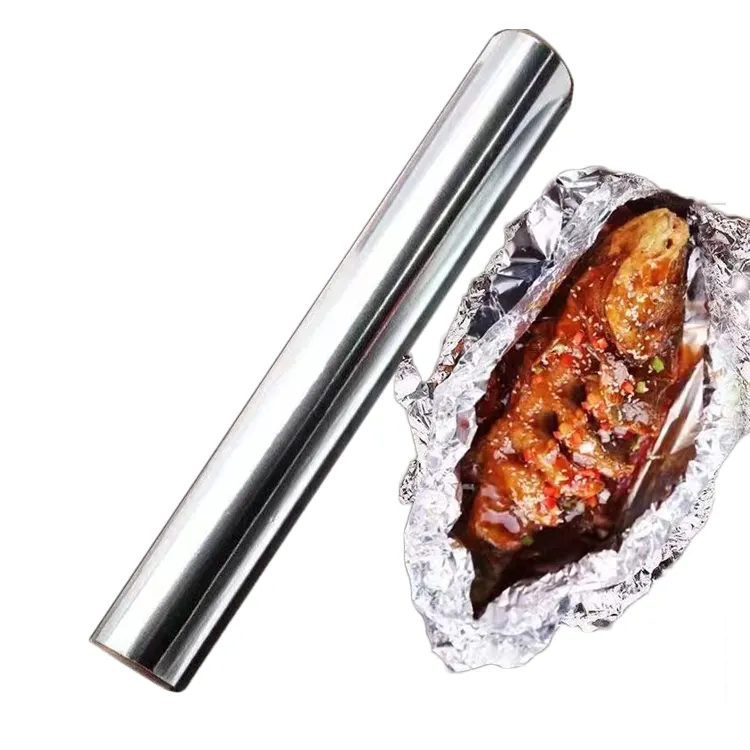Aluminium foil is a staple in kitchens, restaurants, and food industries worldwide. Its reflective, malleable, and heat-resistant properties make it a popular choice for wrapping, storing, and cooking food. But is it truly safe and sustainable for food packaging, or does it pose hidden risks? This article explores the pros, cons, and science-backed facts to help you decide whether aluminium foil is good or bad for your needs.
The Benefits of Aluminium Foil for Food Packaging
1. Superior Preservation
Aluminium foil acts as an excellent barrier against:
- Moisture: Prevents food from drying out or becoming soggy.
- Oxygen: Reduces oxidation, keeping fruits, vegetables, and meats fresher longer.
- Light: Blocks UV rays that can degrade nutrients or spoil dairy products.
- Odors: Seals in smells and protects food from absorbing external aromas.
This makes it ideal for storing leftovers, freezing meals, or packaging perishable goods.
2. Heat Resistance & Cooking Versatility
- Withstands extreme temperatures (from freezing to oven baking up to 450°F/230°C).
- Enables even cooking for dishes like grilled fish, baked potatoes, or roasted vegetables.
- Safe for use in conventional ovens, grills, and campfires (unlike plastic wraps).
3. Non-Toxic and Food-Safe
- FDA-Approved: High-quality aluminium foil is deemed safe for direct food contact by regulatory bodies like the FDA and EFSA.
- Does not leach harmful chemicals when used correctly (unlike some plastics).
4. Recyclability
- Aluminium is infinitely recyclable without losing quality. Recycling it saves 95% of the energy required to produce new foil.
- Many municipalities accept clean aluminium foil in recycling programs.
The Drawbacks of Aluminium Foil for Food Packaging
1. Environmental Impact of Production
- Energy-Intensive Manufacturing: Producing virgin aluminium requires mining bauxite ore and significant electricity, contributing to carbon emissions.
- Landfill Waste: Discarded foil that isn’t recycled can take 400+ years to decompose.
2. Potential Health Risks
- Acidic or Salty Foods: Cooking or storing acidic foods (e.g., tomatoes, citrus) or salty dishes in aluminium foil may cause trace amounts of aluminium to leach into food.
- Overexposure Concerns: While the WHO states that daily intake of 1–2 mg/kg of body weight is safe, excessive consumption of aluminium has been loosely linked to health issues in some studies.
3. Limited Reusability
- Unlike silicone or glass containers, aluminium foil is often single-use.
- Crumpled or greasy foil is difficult to recycle, leading to waste.
4. Cost Over Time
- Frequent use of foil for daily food storage can become expensive compared to reusable alternatives.
Is Aluminium Foil Safe? Key Safety Tips
To minimize risks when using aluminium foil:
- Avoid High-Acid Foods: Use glass or stainless steel for citrus, vinegar-based dishes, or tomato sauces.
- Don’t Use in Microwaves: Packaging foil can cause sparks or fires.
- Skip Non-Stick Coatings: Some coated foils contain chemicals like PFOA—opt for uncoated versions.
- Recycle Properly: Clean foil of food residue before tossing it in recycling bins.
Aluminium Foil vs. Alternatives: Which Is Better?
| Material |
Pros |
Cons |
| Aluminium Foil |
Lightweight, heat-resistant, recyclable. |
Single-use, energy-intensive production. |
| Plastic Wrap |
Cheap, flexible. |
Non-recyclable, may leach toxins. |
| Beeswax Wraps |
Reusable, eco-friendly. |
Not heat-resistant, shorter lifespan. |
| Glass Containers |
Non-toxic, reusable, microwave-safe. |
Heavy, breakable. |
When to Use Aluminium Foil (And When to Avoid It)
Good For:
- Grilling or oven cooking.
- Short-term storage of dry or neutral-pH foods (bread, sandwiches, baked goods).
- Freezing meat or prepared meals.
- Creating airtight seals for perishables.
Avoid For:
- Long-term storage of acidic/salty foods.
- Microwave heating.
- Daily single-use packaging (opt for reusables instead).
Eco-Friendly Practices with Aluminium Foil
- Reuse It: Smooth out lightly used foil for non-food tasks (e.g., polishing silver, cleaning pans).
- Recycle Right: Ensure foil is clean and balled up to at least 2 inches in diameter for recycling.
- Choose Recycled Foil: Brands like If You Care offer 100% recycled aluminium foil.
The Verdict: Is Aluminium Foil Good or Bad?
Aluminium foil is a safe and effective food packaging material when used appropriately. Its ability to preserve freshness and withstand heat makes it invaluable for cooking and storage. However, its environmental footprint and potential leaching risks with acidic foods mean it shouldn’t be used indiscriminately.
For Most People:
- Use foil sparingly for cooking and short-term storage.
- Pair it with reusable containers to reduce waste.
- Recycle diligently to minimize environmental harm.
For Eco-Conscious Users:
- Transition to beeswax wraps, silicone lids, or glass containers for daily needs.
- Reserve foil for tasks where alternatives aren’t practical (e.g., grilling).
FAQs About Aluminium Foil for Food Packaging
Q: Does aluminium foil cause Alzheimer’s disease?
A: No conclusive evidence links aluminium foil to Alzheimer’s. The WHO considers typical dietary aluminium intake safe.
Q: Can I line my air fryer with aluminium foil?
A: Yes, but avoid blocking vents and use small, secured pieces to prevent fire hazards.
Q: Is burnt aluminium foil toxic?
A: Inhaling fumes from burnt foil is not recommended, but occasional exposure is low-risk.
Q: Which side of the foil should touch food?
A: Both sides work equally—the “shiny vs. dull” myth has no scientific basis.









Share this page with your family and friends.